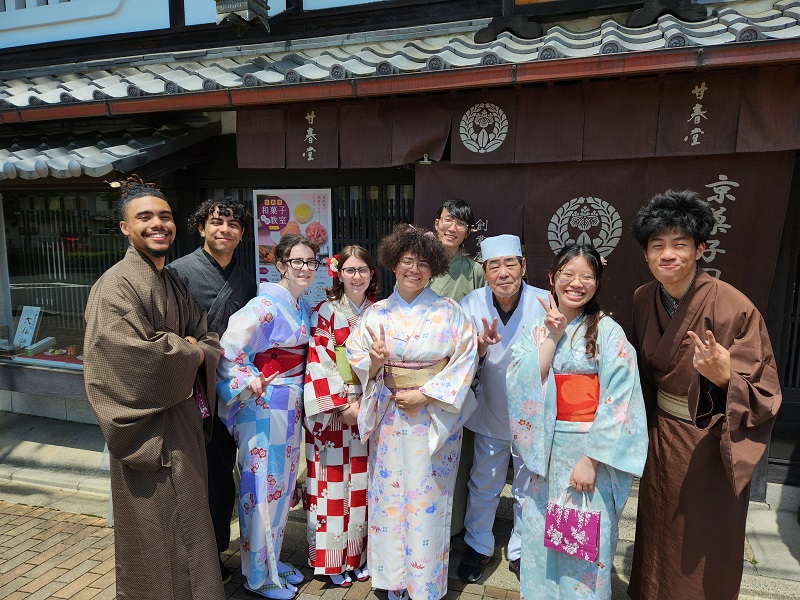Ever catch yourself saying “uh” or “like” while thinking? You’re not alone—filler words are a natural part of speech.
Japanese has its own set of fillers that play a key role in everyday conversation. Like in English, they’re common in casual speech but can appear in formal settings too. Whether you’re a student or language enthusiast, learning these subtle words can help you sound more natural and connect more easily with native speakers. In this blog post, we’ll share 8 Japanese filler words!
Something to keep in mind is that intonation (the rise and fall of the voice in speaking) varies: Standard Japanese tends to be flatter and more even, while the Osaka dialect is more expressive, with greater pitch variation.

Let’s dive into 8 Japanese filler words you’ll hear out in Japan:
- ええと (eeto) / えっと (etto) / え (ē)
- あの (ano)
- そうか (sōka)
- そうそう (sō sō)
- なんか (nanka)
- ていうか (te iu ka)
- あら (ara)
- それで (sore de)
1. ええと (eeto) / えっと (etto) / え (ē)
It’s similar to saying “Um…”, “Uh…”, “Well…”
Example:
木村さんの電話番号知ってる?
Do you know Kimura’s phone number?
えっと、ちょっと待ってね。
Um, hold on a sec.
2. あの (ano)
It’s similar to saying “Um…”, “Uh…”, “Excuse me…”
Example:
あの、すみませんが道を教えていただけますか?
Excuse me, could you tell me how to get there?
3. そうか (sōka)
It’s similar to saying “I see…”, “Ah, that makes sense…”, “Well…” This may be the most frequently used filler word, and it’s the one that students learn earliest. The more polite version is sodesuka or そうですか.
Example:
そうか…大変だったね。
I see… that must’ve been tough.
4. そうそう (sō sō)
It’s similar to saying “Oh yeah!”, “Exactly!”
Example:
A: この前の映画、面白かったね。
That movie we saw was great, right?
B: そうそう!めっちゃ面白かった!
Yeah, totally! It was super fun!
5. なんか (nanka)
It’s similar to saying “Like”, “Kind of…”, “Sort of…”, “You know…”
Example:
ケーキとか、なんか甘いものが食べたい。
I want cake or, like, something sweet.
6. ていうか (te iu ka)
It’s similar to saying “I mean…”, “Like…”, “Actually…”
Example:
今日は忙しかった。ていうか、ずっと走り回ってた。
Today was busy. I mean, I was running around all day.
7. あら (ara)
It’s similar to saying “Oh!”, “Oh dear!”, “Oh my!” Usually used to express mild surprise, curiosity, or concern. It can also be repeated (ararara or あららら) for emphasis.
Example:
あら、もうこんな時間!
Oh! It’s already this late!
8. それで (sore de)
It’s similar to saying “And then…”,”So…”, “Because of that…” Especially in causal speech, the end of the sentence is often omitted and is usually implied with the context.
Example:
他の質問はないですか?じゃ、それでは。
Any other questions? Well, with that [we’ll call it a day].
Are you interested in learning a lot about Japan through its culture, people, and language? Spend a semester living in Osaka— known as the Downtown of Japan! Or study abroad in the summer to excel in your language learning by committing to a full-time language pledge and living with a local Japanese roommate. Studying at CET Japan is one of the best ways to immerse yourself!